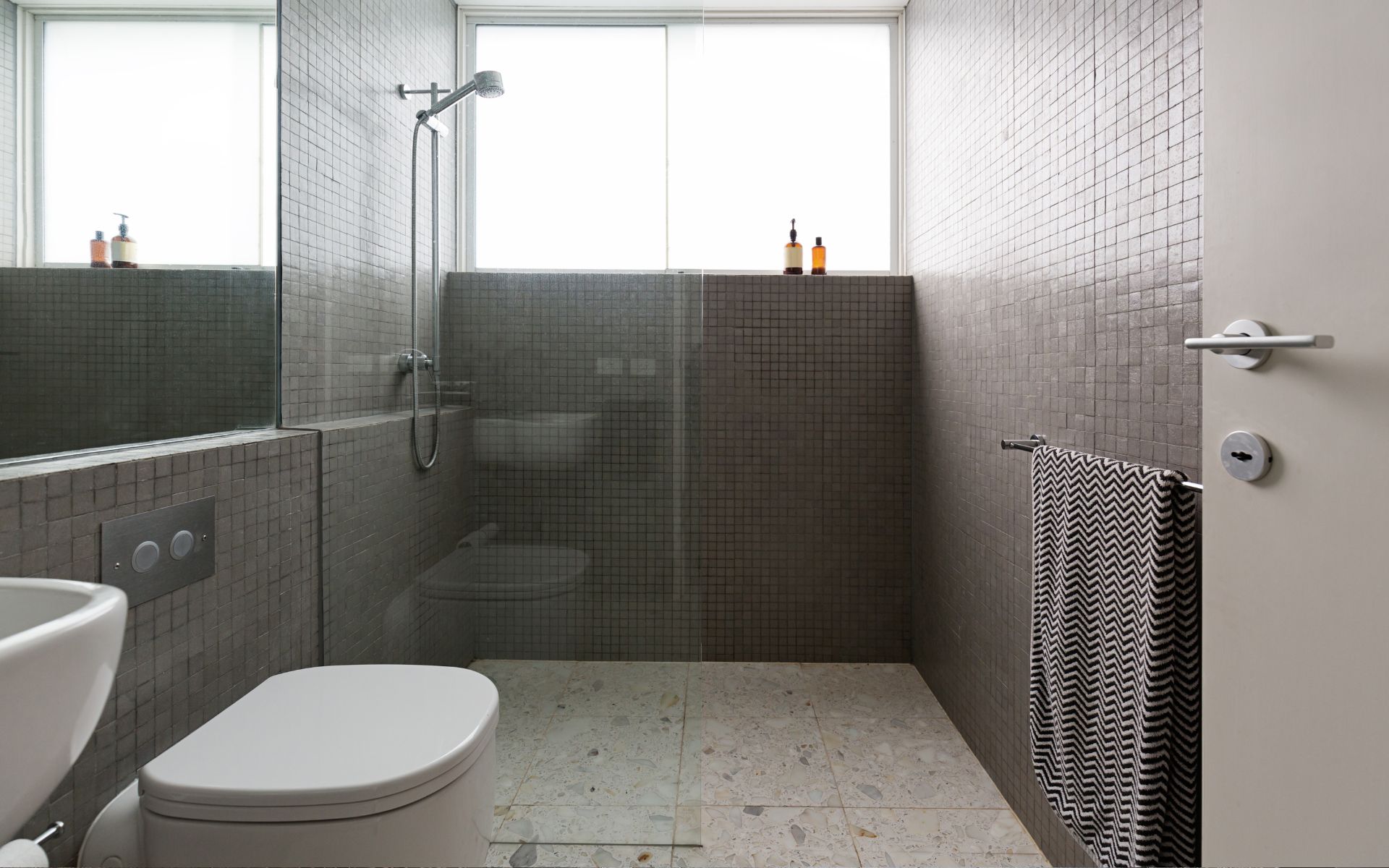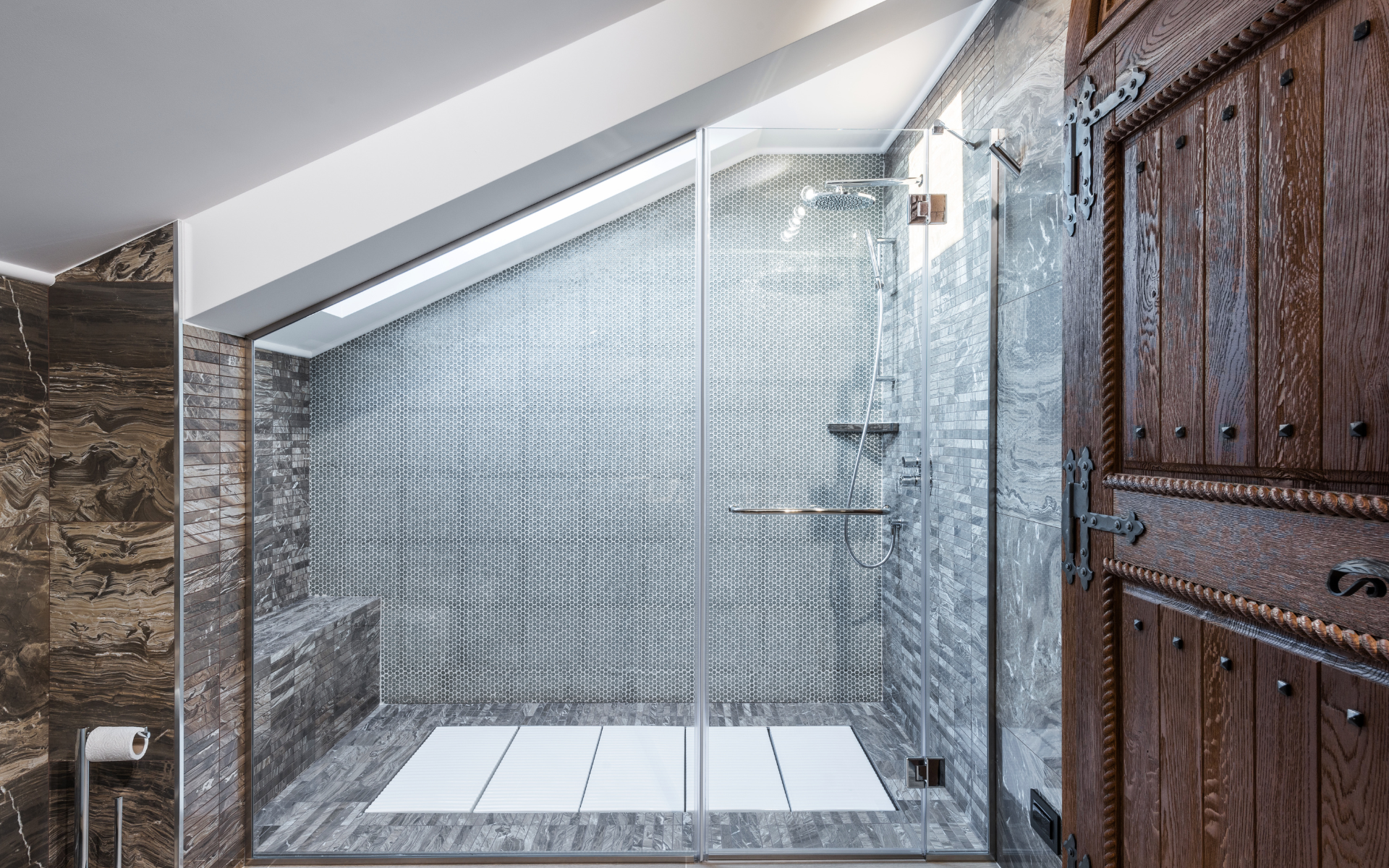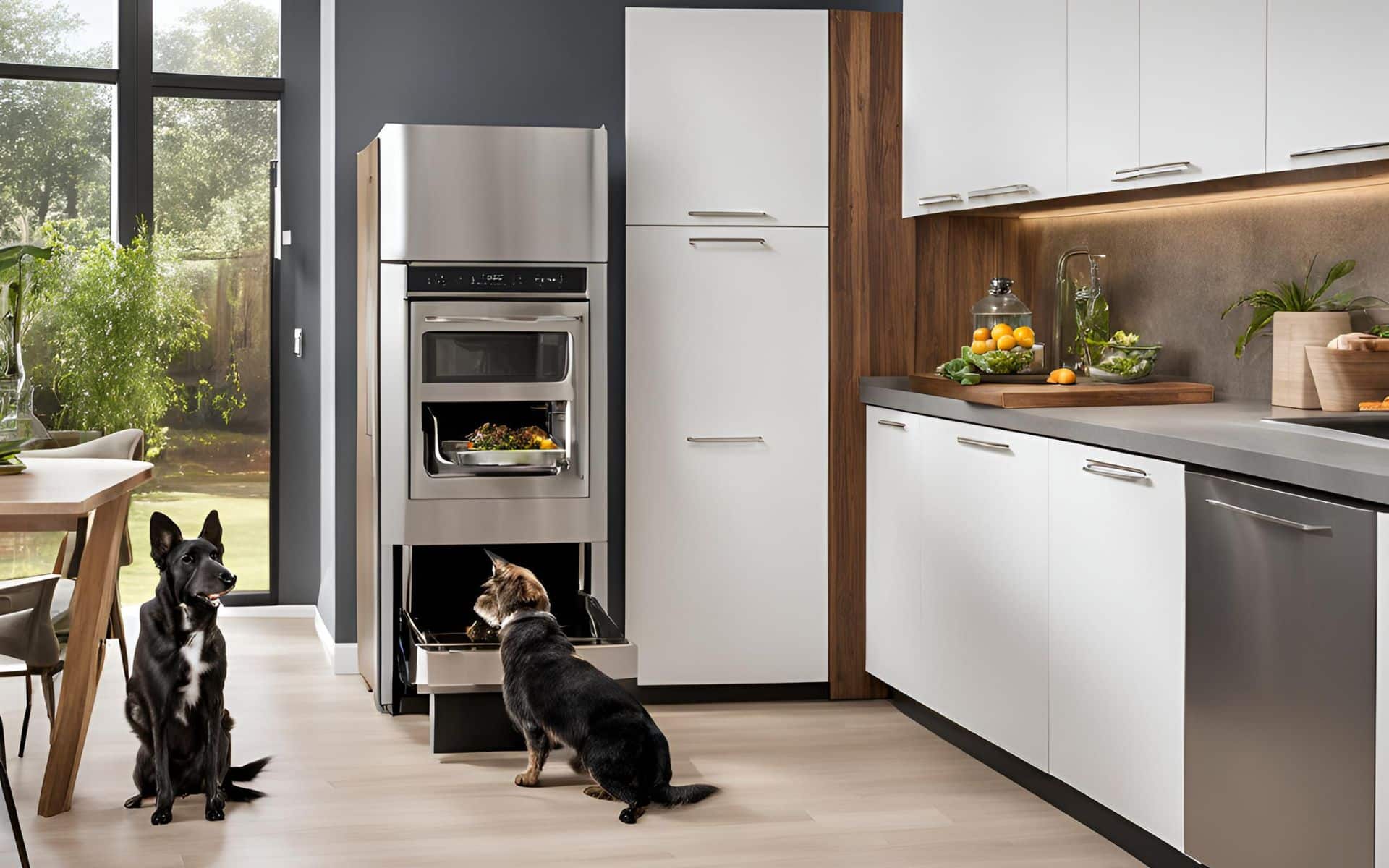Stepping over a tall shower curb can be difficult, and dangerous even, for those with limited mobility. Curbless showers eliminate this hurdle, allowing easy entry and exit for all while introducing design flexibility. But they aren’t without drawbacks. Before you hire a kitchen and bath contractor to help you have the shower you deserve, below we’ll explore what defines a curbless shower, weigh the pros and cons of installing one in your home, and outline key design choices to make the most out of this accessible, open-concept shower option.
What Makes a Shower Curbless?
A curbless shower, also called a zero-entry or no-threshold shower, has no raised curb to step over. Instead, the shower floor smoothly transitions to the rest of the bathroom floor, creating one long stretch of low or sloped floor. This subtle yet impactful design tweak makes curbless showers more accessible for:
- Those with mobility limitations – No need to lift legs high or steady oneself to step over a tall curb. This includes the elderly and those recovering from surgery or injury.
- Individuals with disabilities – Wheelchair users can simply roll into the open shower space without impediment.
- Young children – Unsteady little ones can move freely without tripping hazards underfoot. Parents may also find it easier to bathe wiggly toddlers.
With no barriers to entry, curbless shower remodels promote independence and make bathing safer for those who struggle with high curbs. But they benefit all users with flexibility and visual appeal, as we’ll explore next.
Benefits of Curbless Showers
According to the National Kitchen and Bath Association (NKBA), curbless showers ranked 8th on their annual interior design trends survey for 2023.
More Open Floor Plan
Removing the shower curb opens up the whole bathroom, letting the shower blend seamlessly into the surrounding space. The shower area may borrow views and materials from the larger bathroom, creating a unified look. If you’re aiming for a spa-like, resort-style bathroom, a curbless design can help achieve that open atmosphere.
Flexible Access
The lack of a threshold allows you to enter the shower from any angle rather than a limited entry point. This makes curbless showers ideal for larger walk-in showers as you, other household members, future homeowners, or guests can easily access the shower from multiple locations. At different heights, users can choose the entry point that works best for them.
Improved Safety
The Center for Disease Control (CDC) recommends curbless showers as an aging/elderly-friendly housing feature that improves home accessibility and safety.
Curbless showers remove tripping hazards for those unsteady on their feet, minimizing falls and injuries. This includes:
- Elderly individuals prone to unsteadiness
- Those with disabilities affecting balance and coordination
- Small children still perfecting coordination
Caregivers also benefit from the safety enhancements, allowing them to assist individuals without struggle.
Simplified Cleaning
A curbless design has fewer crevices (like a curb corner) for dirt, hair, soap scum, and mold to hide. This makes maintenance cleaning easier. The smooth floor also allows a squeegee to glide evenly across the entire shower surface after use.
Modern, Sleek Look
Curbless showers forgo obstructive design elements like curbs and glass doors for an uninterrupted flow into the shower space. The aesthetic aligns with contemporary design trends favoring open concepts with plenty of breathing room.
You aren’t limited to contemporary styles though. For instance, you can incorporate traditional details like subway tiles and brass fixtures for a classic-style curbless shower.
Customization Options Galore
Choosing a curbless shower immediately unlocks customization potential. Design the exact entry and exit points you want. Integrate or forgo sections like:
- Built-in seating
- Recessed shelves
- Designer drains
- Specialty showerheads
- Grab bars
- Accent lighting
You can fully personalize the shower layout, features, sizes, colors, and more to your exact taste and needs since curbless showers are often custom jobs.
Drawbacks of Curbless Showers
Of course, curbless showers aren’t all sunshine and rainbows. Here are a few of the downsides to consider:
Water Containment Challenges
The lack of a threshold allows water to freely escape the shower area onto the bathroom floor. Curbless showers require thoughtful design and special measures (which we’ll cover next) to direct water back into the shower zone.
Higher Installation Costs
Curbless showers typically cost more than standard curb showers given the expertise needed to properly slope floors, integrated drainage systems, waterproof surroundings, etc. They also may require changes to the structural floor system if converting an existing curbed shower. Installation costs depend heavily on the specifics of your unique project.
Ongoing Maintenance Requirements
Sealing grout and caulk annually will extend the lifetime of substrates exposed to standing water. Water should also drain fully after each use to avoid issues. Catching small issues early makes repairs less costly and intrusive than letting water damage advance over years of neglect.
Limited Design Options
Curbless designs limit some traditional design elements like framed glass doors, small drains, and decorative wall details. Workarounds exist in many cases with careful planning, but some options prevalent with curbed showers simply don’t suit curbless models.
Key Curbless Shower Design Decisions
If you opt to install a curbless shower despite the drawbacks, careful design decisions must follow to create a functional, water-tight space you’ll enjoy for decades.
Key considerations include:
Proper Slope
The entire shower floor needs to slope gradually towards suitable drainage to effectively divert water. Typically a 1⁄4 inch slope for every foot of floor space works well, but follow your installer’s recommendations. Pay special attention to slope direction and location(s) needing drainage.
Adequate Drainage
Choose drainage grates able to withstand heavy flow and locate them appropriately. Linear trench drains stretching along the shortest shower dimension work well. Separate drains may suit larger layouts. Proper slope, drainage count, and drainage capacity all help prevent overflow onto the bathroom floor.
Waterproof Membranes
Waterproofing separates the structural floor from the finish materials, preventing moisture damage. Essential for all tile showers, this barrier becomes even more critical with curbless models. Extend the membrane several inches vertically onto walls around the shower area too.
Threshold Options
Some curbless designs incorporate subtle, low thresholds or barriers to better corral water while maintaining accessibility. For instance, a thin strip of tile matching the floor can serve as a discreet barrier. This Sculpturesque Heated Floor creates an even more imperceptible threshold with slim integrated heating wires.
Another option is small barriers that deflect water back into the main shower area without blocking wheelchair access. Pay attention to maximum height allowances if pursuing this.
Careful Material Selection
Porcelain, ceramic, or natural stone tiles stand up well to moisture and suit curbless applications. Small mosaic tiles help water flow to drains versus absorbing into grout lines. Individual tiles with SP ratings to indicate slip resistance work better than broad slippery swaths. Select wall coverings capable of resisting moisture too. Inside shower niches, glass or metal surfaces prove durable and easy to clean while resisting water damage.
Strategic Design Choices
Curbless shower layouts work best when simple, strategically planned, and well-executed. Keep the floor plan clean and contemporary. Stick to one or two materials rather than busy patterns.
Accessorize modestly with corner shelves rather than excessive built-ins which require joints and grout. Specify glass doors that swing out rather than traditional sliding units. Place operational pieces like shower heads and mixing valves away from the main traffic path. Design decisions that limit seams and complications will reward you with better long-term water resistance.
Careful Construction
Meticulous waterproofing, consistent slope to drains, conscientious materials sealing, and strict adherence to manufacturer specs go a long way. Hire experienced professionals who specialize in curbless installations for the best results. Keep the space well-ventilated during and after construction to allow proper curing of all water barriers and sealants so they perform as intended.
Artistic Tile Designs
While large-scale tile layouts suit contemporary curbless shower styles, don’t shy away from artistic tile patterns if you fancy Old World character.
Some beautiful options include:
- Moroccan-inspired decorative tile accents
- Geometric designs like hexagons or triangles
- Contrasting mosaic tile inlays
Mixing materials can reinforce zones within open showers as well. Perhaps small mosaic tiles define a centralized bench area bordered by larger porcelain tiles. The lack of a curb allows flexible integration of artistic details.
Glass Brick Accents
Glass brick remains a tried and true material for wet areas, with good cause. The translucent blocks withstand moisture while allowing soft light into the showering space. Avoid large expansive surfaces lacking grip. Instead define select locations like:
Glass brick niches
- Built into the shower wall to replace traditional shelves
- Allow colored light into the shower interior
Partial glass brick walls
- Dividing the shower room from the dressing area
- Maintaining visibility without fully closing the space
Focal columns
- Floor-to-ceiling glass brick columns make notable style statements
- Coordinate with other glass brick accents throughout the bath
The translucency and texture of glass brick never fail to impress while suiting curbless showers beautifully.
Nature-Inspired Features
Natural finishes like stone, wood, shells, etc make lovely curbless shower palettes. Don’t be afraid to think outside the box with materials rarely found inside showers.
Some naturistic shower remodeling ideas are:
- Bluestone slab walls
- River rock floors
- Petrified wood niches
- Shell inlays
Coordinate with decor beyond the bathroom to carry the motif throughout your homestead.
Considering all this
Curbless showers trade obstacles for an accessible shared space benefitting diverse users in sleek style. For households with mobility limitations or small children, they promote safety. They align with contemporary design aesthetics from their clean sightlines to uninterrupted floor plans. The expandability, customization range, maintenance perks, and sheer versatility make them enticing options as well.
But the devil is in the details. Success requires thorough planning, strategic design decisions, meticulous construction, and consistent maintenance. Costs also typically run higher than conventional curb showers. Weigh the pros, cons, and commitment levels to determine if trading the shower curb for a curbless model suits your home, lifestyle, and budget long term.










